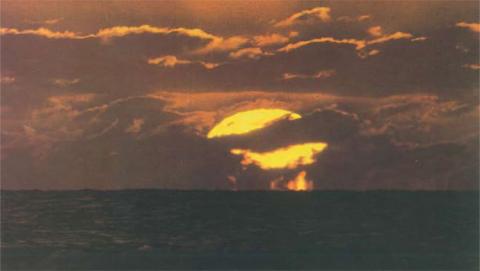How Does an Eclipse Occur ?
Eng. Abdulwahab Al-sayed
Every year or so, somewhere in the world, the sun does disappear quite naturally, This happens when the moon passes between the earth and the sun obscuring it from view. This event is called an eclipse. In the past, people used to panic and get startled, when an eclipse occurs, they used to think of it as a sign of a coming disaster. But nowadays, after we understood what is fear. Witnessing an eclipses hold on no great eerie experience.
It can turn from daylight into darkness in an instant. In a place of the shining sun, there is a black disc the intervening moon – with a sparkling circle of pearl – white light around it. This circle is the sun corona. It may seem strange that a very small body as the earth’s moon, (diameter is 3.473 km), can completely obscure a colossal star like the sun (diameter is about 1.392.000 km). The explanation lies in distance and the fact that farther away an object is the smaller it looks.
So, although the sun’s diameter is a little over 400 times the diameter of the moon, it can appear to be the same size because the sun is between 367 and 419 times farther from earth than the moon is.
The figure can’t be constant because neither the orbit of the earth around the sun nor that of the moon around the earth is completely regular. Because it is the closest object to the earth, the moon actually looks a little bit larger than the sun, and that is when the moon obscures the sun completely and cause a total eclipse. What observers see during an eclipse depends on where they are on earth. A total eclipse appears only in the places that are directly in line with the sun and the moon. A total eclipse happens because of the moon’s umbra (the area of total darkness in which the sun is completely obscured), the totally dark part of its shadow, touches the earth, creating a limited area, about 241 km wide in which the sun is completely obscured. An eclipse can also be partial. And the happens when one edge of the sun is visible. In this hidden area (about 437 km wide), the moon’s penumbra, the lighter part of its shadow, falls on contains some sunlight, whereas the umbra contains none. It is not so spectacular when the moon itself goes into an eclipse. This happens when it moves through the shadow of the earth. The moon almost disappears in that case, leaving only the faintest outline that can be seen because of the faint reflected earth light. Eclipses make it possible for astronomers to study the outer parts of the sun its corona, and its chromospheres (atmosphere).
Also, eclipses make it a lot easier to photograph the stars, and some of the stars near the sun, can only be successfully photographed during an eclipse. However, the French astronomer Bernard Lyot, invented the coronagraph the made it possible for astronomers to study the sun’s corona at times other than eclipse time. So, whereas their ancestors dreaded the blackness of an eclipse, nowadays people actually look forward to those few minutes of darkness in the daytime sky.
Reference: Beatona magazine - Environment Public Authority - issue No. 3







